
>
Info:
I Methodical preliminary
exercises: an introduction
'With
something being contradicted
it is not proven that it is untrue,
just as not being debated
would prove that someting is true.'
B. Pascal. Thoughts
Einstein,
the
ether and relativism
If we want to figure out out
the truth about the facts that make up
our reality, we have to begin with
determining the method to proceed. In
ancient India it is called nyâya, which according to the
Sanskrit dictionary means something
like method, standard, rule, axiom,
plan, the right manner, justice,
logical argument or inference. In the
logic of our planned approach emerges,
so as to arrive at the proper
inference, an image of reality, a
standard way of operating in the right
manner. This logic, itself thereto
called nyâyika, consists of five limbs:
1 General
thesis.
2 Doubt.
3 Counter argument.
4 Conclusion.
5 Summary.
It is of course possible
to call for the philosopher R.
Descartes (1596-1650) with his
method so very much alike, and the
philosophers I. Kant (1724-1804) for
the duality and G. W. F. Hegel
(1770-1831) for the idea of thesis
opposing antithesis in order to
arrive at a synthesis, we may
consult S. Freud (1856-1939) for an
analysis and F. Nietzsche
(1844-1900) for realizing ourselves,
but then we are building one house
with many master builders. There is
after all also the (elder)
philosopher W. v.
Ockham (1285-1349) who, with his
well-known 'razor'-argument, poses
the question why we would utilize
different elements when a single one
would suffice. To prevent a
subsequent tumbling over one another
of master builders for our
filognostic mansion, we first of
all, for the first half of part I,
limit ourselves to the Vedic vision
in reation to Descartes, since he
specifically has the method as his
subject. And even him we will have
to abandon ultimately, since also
he, not conversant with it as he was
in his time, was incapable of
covering the non-western tradition
about it prior to him, nor the
empirical science after him, however
diligent he was. Rationality is
something beautiful and good, reason
is essential, the method is of great
importance, but it is also vital, as
he states himself, to be
comprehensive in the end. The
general thesis is therefore, with
having put India first as the oldest
culture known to us, that that old
culture, as the one master builder,
suffices for a philosophical lead to
tackle the problems of modern man
and to arrive at the filognosy of a
syncretic approach of science,
spirituality and religion. For,
contrary to Descartes, with them,
with those Vedic sages, we do find
evidence of a respect for scientific
facts as the existence of a galaxy
in the midst of other galaxies, as
also a clear description of the
problems we recognize as typically
modern. It is of importance to work
for a coherent paradigm with which
the complete whole of our reality
can be properly covered, matters of
the spirit and the gross of matter
can be done justice, and with which
everything and everyone may fit in,
so that the person in his full
identity is respected.
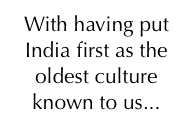
Since, as the
preface points out, we have to
link this love for knowledge to a
certain order of time if we want to
have a life with it, will we also
have to involve a physicist like Albert
Einstein (1879-1955) because he,
as the figurehead of our modern
intelligence, promulgated the
relativity of the time concept. Let's start with him for
exercising the method. According to him, to his conception of E =
M x c2 for the universe, the speed of light (c)
would be the constant in the
dynamical universe of time and
matter. Time, according to Einstein
and many others who thought to have
understood him, is always different
and depends on the frame of
observation. The correctness of his
theory, implies that the absolute
value of time computations is
illusory and that we, politically,
therefore (...) factually can
regulate, settle and control the
time any way we like. I
Newton (1643-1727) would be wrong with his
absolute idea of a natural time as
the measure for determining our
lawfulness of material existence.
That would be a position all too
deterministic. So be it, but the
problem is that we end up with a
couple of 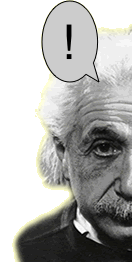 conflicting ideas if we
give Einstein the advantage of doubt
in determining what is absolute.
Firstly it is so
that we might not understand
Einstein quite right. Time and space
are according to his theory not
exactly the same, viz. they do not
entirely team up. According his
theory there is a difference between
the time indicated by an atomic
clock that in an airplane flew
around the world and the time of a
similar atomic clock that was kept
in its place. This was tried, and
one indeed found a very minute
difference between the atomic clocks
the way the theory predicted, even though this
experiment from 1972 according to
some was thus unsatisfactorily
conducted that factually no
definitive conclusion should have
been attached to it (see A.G. Kelly:
Hafele
& Keating Tests; Did They
Prove Anything?). Is Einstein therefore
correct in saying that the time of a
certain place must be taken
relative? If so, is it then really
so that this minute difference, with
which also astronauts e.g. would
have to return home, would justify
the difference in time and space we
find with the standard time of our
civil order as compared to the time
indicated by sundials? In China that
difference, at the beginning of the
21th century, amounts to some three
hours, which in the west of China
leads to the civil disobedience of
peasants ignoring the imposition of
the state adamantly, when they, with
a to the local time settled clock,
regulate their daily business. When
Einstein thinks to have found an
exception to the rule of the
newtonian link of time and space,
does that not factually imply that
that connection thereby is
confirmed? Is it not folk wisdom,
still to defend that the exception
confirms the rule? Then why would we
have to reject Isaac Newton with his
devout, religious and classical
respect for the natural measures of
time, the way they are for normal
people and planets? conflicting ideas if we
give Einstein the advantage of doubt
in determining what is absolute.
Firstly it is so
that we might not understand
Einstein quite right. Time and space
are according to his theory not
exactly the same, viz. they do not
entirely team up. According his
theory there is a difference between
the time indicated by an atomic
clock that in an airplane flew
around the world and the time of a
similar atomic clock that was kept
in its place. This was tried, and
one indeed found a very minute
difference between the atomic clocks
the way the theory predicted, even though this
experiment from 1972 according to
some was thus unsatisfactorily
conducted that factually no
definitive conclusion should have
been attached to it (see A.G. Kelly:
Hafele
& Keating Tests; Did They
Prove Anything?). Is Einstein therefore
correct in saying that the time of a
certain place must be taken
relative? If so, is it then really
so that this minute difference, with
which also astronauts e.g. would
have to return home, would justify
the difference in time and space we
find with the standard time of our
civil order as compared to the time
indicated by sundials? In China that
difference, at the beginning of the
21th century, amounts to some three
hours, which in the west of China
leads to the civil disobedience of
peasants ignoring the imposition of
the state adamantly, when they, with
a to the local time settled clock,
regulate their daily business. When
Einstein thinks to have found an
exception to the rule of the
newtonian link of time and space,
does that not factually imply that
that connection thereby is
confirmed? Is it not folk wisdom,
still to defend that the exception
confirms the rule? Then why would we
have to reject Isaac Newton with his
devout, religious and classical
respect for the natural measures of
time, the way they are for normal
people and planets?
It is even worse with the
theory of Einstein so fundamental to
our modern relativistic mind and for
our aversion against especially
personal absolutes. Recently (summer
2005) the theory by the italian
physicist Maurizio Consoli was
questioned, to the occasion of
experimental findings in an
experiment performed by the german
physicist Stephan Schiller in
Düsseldorf, on the speed of light
which, according Consoni, as a
theorist interpreting the data with
greater scrutiny and detachment than
he did, would not be uniform in all
directions, and that it thus would
be directional and that therefore
there would be a certain order of
light, a framework, in the universe.
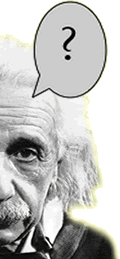 Such a paradigmatic clash
after experimental findings had
happened before, when a certain
researcher named D. C. Miller in
1933 meant that Michaelson
and Morly, the physicists who in
1887 initiated the idea of a
constant light speed, which Einstein
took as a basis for his theory, had
made mistakes in working from
averaged values to the rotational
speed of the earth. Before him Ernst
Mach (1838-1916) had concluded
that there was no definitive proof
for the so-called ether as the fixed
frame of reference for a variable
light speed in a vacuum. In respect of the
measurements of the light speed,
which according to Miller differed
relative to the position of the
earth, the earth nevertheless would move
with a speed of eight kilometers per
second through a medium that would
be something like the ether, the
fundamental element in which all
scientists before Einstein believed
as being the medium in which light
would vibrate it's waves. After Miller there were,
by Yuri M.
Galaev e.g., many more tests
conducted with this so-called
M.&M.-experiment with varying
results. The scientists in 2005,
under the lead of Schiller
discovering the same type of
deviations, therefore could not
accept their own findings; they
could not believe that Einstein's
theory would not be correct which
states that such findings cannot be
right, and so they attributed the
deviations found to systematic
error. From a human point of view
that is understandable, since the
consequences for our presently
dominating way of thinking about
time and space are hard to oversee. Such a paradigmatic clash
after experimental findings had
happened before, when a certain
researcher named D. C. Miller in
1933 meant that Michaelson
and Morly, the physicists who in
1887 initiated the idea of a
constant light speed, which Einstein
took as a basis for his theory, had
made mistakes in working from
averaged values to the rotational
speed of the earth. Before him Ernst
Mach (1838-1916) had concluded
that there was no definitive proof
for the so-called ether as the fixed
frame of reference for a variable
light speed in a vacuum. In respect of the
measurements of the light speed,
which according to Miller differed
relative to the position of the
earth, the earth nevertheless would move
with a speed of eight kilometers per
second through a medium that would
be something like the ether, the
fundamental element in which all
scientists before Einstein believed
as being the medium in which light
would vibrate it's waves. After Miller there were,
by Yuri M.
Galaev e.g., many more tests
conducted with this so-called
M.&M.-experiment with varying
results. The scientists in 2005,
under the lead of Schiller
discovering the same type of
deviations, therefore could not
accept their own findings; they
could not believe that Einstein's
theory would not be correct which
states that such findings cannot be
right, and so they attributed the
deviations found to systematic
error. From a human point of view
that is understandable, since the
consequences for our presently
dominating way of thinking about
time and space are hard to oversee.
"...the
failure of the world's
physicists to find such a
(satisfactory) theory,
after many years of
intensive research," says
Dirac, "leads me to think
that the aetherless basis
of physical theory may
have reached the end of
its capabilities and to
see in the Aether a new
hope for the future".
Paul
Dirac, the Nobel
Prize winner in physics in
1933
Scientific
American, The
Evolution of Physicists
Picture of Nature,
May 1963
|
Concerning the speed of
light itself that in its absolute
value seems to have dethroned time
as being an absolute measure, there
is another remarkable issue to take
notice of. There exists light that
goes three hundred times faster!
Scientists think nothing special of
it since the end of the twentieth
century. How can that be? According
to Einstein in 1905, nothing would
go faster than the absolute speed of
light namely. But light is, ever
since it halfway the nineties of the
twentieth century was discovered,
capable of speeding 1,7 as fast
through a special fiber optic cable,
and even three hundred times as fast
when driven through a gas cloud. The
solution to this riddle is there
since 1910: the limit of the speed
of light is only true for coded
light, not for the light itself. The
physicist Daniel Gauthier confirmed
this remedy for saving Eintein's
theory of relativity in 2003, by
again stating that according to his
findings the limit of the speed of
light indeed, so it seems, is true
for coded light carrying
information, but not for uncoded
light. Thus seen, the speed of light
is a
conditional or apparent constant and
not an absolute constant. Depending
the medium and the type of light,
light may possibly
go infinitely fast and thus can Einstein's
formula, which builds on a speed
limit or an absolute constant of
speed in the vacuum of outer space,
actually not be correct at all. In
respect of normal circumstances on
our planet earth, the speed of light
may seem
constant, but it seems to be so
that, in the special circumstances
of other conduits and/or fields, we
with Einstein are dealing with
something that is more a theory of
constants than with a theory capable
of justly declaring time relative
(Einstein himself preferred the
formulation 'a theory of
invariants'). By and by it offers no
surprise anymore that, save for a
couple of zealous scientific
fanatics, virtually no one
understands Einstein. For he, from
the perspective of our modern
options, does not quite compute.
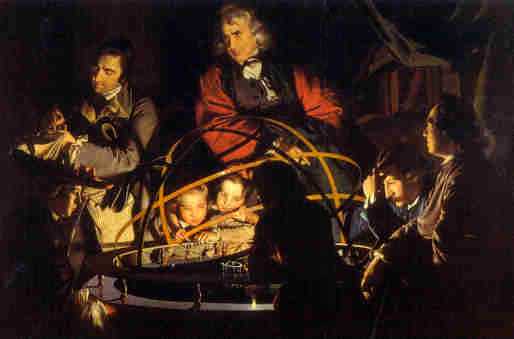
The proof is piling
up further. A certain physicist Tom
Van Flandern states in an article
titled The
Speed of Gravity & What
the Experiments Say: Physics
Letters A 250:1-11 (1998):
'Recognition of a
faster-than-lightspeed propagation
of gravity, as indicated by all
existing experimental evidence,
may be the key to taking
conventional physics to the next
plateau.' The effect of
gravity goes many times faster than
light. And that also is
incommensurate with Einstein.
Another matter of
dispute among physicists concerning
the speed of light, is the, in 2002
by the internationally acclaimed
physicist, author and broadcaster Paul C.
W. Davies, in Australia found
deviance in the fine-structural or
nuclear constant, akin to the speed
of light, which would prove that the
speed of light would gradually have
decreased in our cosmic ontogenesis.
Also João Magueijo (in 'Faster
Than the Speed of Light' reasoning
in 2003 against the so-called Guth
inflation-theory which would explain
that effect away) states that, if
light in the beginning would have
been faster, that that would offer a
better explanation for the facts of
the as yet maintained theory with
the research data found. But the
magazine Nature answered his
scientific soliciting with the reply
that, even though he, with what he
offered, had found an explanation
for some cosmological matters, he
still had no comprehensive solution
to offer and that he thus had to be
turned down! Was Einstein with all
his followers not also today
searching for the 'Theory of
Everything'? Must we positively
accept him then?
It
seems that landed here we are ready
for the psychologist who studies the
phenomenon of rationalization and
repression in association with
systems of thought. We are thinking
here of the analogy of the
analytical psychologist Carl Jung
(1875-1961) who, equal to Consoli in
relating to Einstein's constants,
called Sigmund Freud (1856-1939), the original
psychoanalyst and father of that
science and notably a friend of
Einstein, himself a complete
neurotic. And let us be honest here;
is relativism really effective in
assuring the progress of mankind on
it's way to peace and justice? The
atomic bomb and the nuclear power
plant that do effectively convert
mass into energy, do not seem to
succeed in it. Maybe we have to
reconsider our dear 'Father of
Time', as a preliminary conclusion
accepting that Einstein maybe was
not correct in every way. Science
happens to consist of trial and
error, that is the power of its
progress.

Doubt the galore thus with
the existing relativistic paradigm.
One does not have to be a
rocket-scientist for that either. On
the internet could, in 2005 in in the dutch science forum wetenschapsforum.nl, a lay-discussion be
followed between in physics
interested enthusiasts arguing about
the particle of light. From their
guesswork it is evident how
impossible it is to understand all
the peculiar conclusions of
Einstein's theory. Light would also
be measurable in photons. A light
particle with a base mass of zero
would, moving around, be a package
of energy, that does have mass. But
how could such a package of energy
having the speed of light, to which
according the theory the particle,
heavy of kinetic energy, would
endlessly increase in weight, there
not be a gravitational effect in the
direction of a black hole like the
center of the galaxy? (this by the
way also belongs to the implications
of Düsseldorf). In order to maintain
Einstein the particle of light cannot
be permitted to have mass, although
it has energy. We also learned from
Einstein that energy and mass add up
with, are equivalent to, the speed
of light according to the formula E
= M x c2, which then
would implicate that we would have
energy that cannot be mass and that
thus the formula, again, would be
wrong. So the
dutch pop-group Doe Maar sang: 'E=Mc2...before
the bomb drops', at the end of
the
song with that name. And that is what the lay
thinks about
it, and in Holland
even sings about it.

And they
allowed Apollonius to
ask questions and he
asked them what they
thought the cosmos was
composed of.
But they replied:
"Of
elements."
"Are there
then four" he asked.
"Not
four," said Iarchas,
"but five."
"And how
can there be a
fifth," said
Apollonius,"alongside
of water and air and
earth and fire ?"
"There is
the ether", the
other
replied,"which
we must regard as
the stuff of which
gods are made, for
just as all mortal
creatures inhale the
air, so do immortal
and divine natures
inhale the ether."
Apollonius
again asked which was
the first of the
elements, and Iarchas
answered:
"All are
simultaneous, for a
living creature is not
born bit by bit."
"Am I,"
said Apollonius, "to
regard the universe
as a living
creature?"
"Yes," the
other said,
"if you have a sound
knowledge of it, for
it engenders all
living things."
The Life
of Apollonius of
Tyana,
Philostratus,
220AD.
|
But it can also be stated
philosophically. In the Vedic literatures
we know, from the philosopher
Sayana, in the Rig-veda verse 1:50:
'Thus it is remebered: you [O
Sun] who traverse 2202 yojanas
in half a nimes'a'.
With S.B. 3.11:
3-10 it then appears that with
a yojana of 31 km the light
speed of ± 300.000 km/s is very
closely described (see Wikipedia). But, o blessed truth,
on closer examination of the Vedic
reference in that same Bhâgavatam
of Vyâsa the yojana in verse 5.25: 1 turns out
to stand also for a measure of
something like a light year at the
scale of the galaxy, at the scale of
the so-called s'is'umâra, the
dolphin, as the Purâna calls
the Milky Way. In other words: the
light speed according to a
coordinated Vedic vision is
variable, depending the frame of
reference. As for this frame, for
the philosopher Aristotle (384-322 B.C.), the two
forms of time were enough
to
speak of the cosmos: the linear and
the cyclic movement of the universe.
For that sufficed in order to speak
of a finite universe, divided in two
realms: that of the unchangeable and
unique celestial sphere of the ether
leading to the cyclic reality of
creation, which is perfect, and that
of earthly matter, which is
characterized by the linear, which
is imperfect, is finite. According
to René Descartes, picking up on
such a division of space with the
element of the ether, there is no such thing as
empty space, a real vacuum, but only
a universe full of interaction, and
thus there would never be a constant
speed of light measurable, but
rather a speed limited by the medium
through which it moves. Consequently
we see the three hundred times
faster light impulse sent through a
gas cloud. After Descartes the physicist J.C.
Maxwell in 1875, in the first
edition of the Encyclopedia
Britannica, in his
respect for his philosophical
predecessor, in a blend of science
and speculative philosophy, initially described the
problematic and mysterious medium of
the ether as follows: 'Whatever
difficulties we may have in
forming a consistent idea of the
constitution of the æther, there
can be no doubt that the
interplanetary and interstellar
spaces are not empty, but are
occupied by a material substance
or body, which is certainly the
largest, and probably the most
uniform body of which we have any
knowledge.' That substance in,
or from, space is then that primal
state of matter from the stars and
planets formed and which is always
there in the background as their
basis, as one complete whole of
potential space-time, as the potency
of the ether, the effect of a
coherent forcefield the way it already in western
philosophy in its
operation was noticed by Aristotle:
the ether as the formative basis for
all in existence. The notion of a
relativistic four-dimensional
space-time, the normal 'euclidian'
space linked to the dimension of
time, was defended by Einstein in
the Brittanica edition of
1922. But Einstein could not ascribe
an absolute value to the
simultaneity of occurrences, for he could not
acknowledge such
an ethereal and absolute, momentous
drive, which by Carl Jung e.g. is
called synchronicity. We, thus seen, do hence, because of the
relativity of the medium, not really
know what we are exactly up to, with
the speed of light. The results of
the measurements are diverging, that
is what we are certain of.
Even Einstein himself
who, in facing the alleged constancy
of light speed, was credited for
having called off the existence of
the ether, devised later on a new
theory departing from a different
concept of the ether (see also Ludwik
Kostro: Einstein and the
Ether). He stated in 1920 about
the ether: 'There can be no space
nor any part of space without
gravitational potentials" and
next he concluded with: "Recapitulating,
we may say that according to the
general theory of relativity space
is endowed with physical
qualities; in this sense,
therefore, there exists
an ether. According
to the general theory of
relativity space without ether is
unthinkable; for in such space
there not only would be no
propagation of light, but also no
possibility of existence for
standards of space and time
(measuring-rods and clocks), nor
therefore any space-time intervals
in the physical sense. But this
ether may not be thought of as
endowed with the quality
characteristic of ponderable
media, as consisting of parts
which may be tracked through time.
The idea of motion may not be
applied to it.' (lecture,
University of Leyden). General
relativity thus implies an ether,
but Einstein disagreed with an
absolute concept of time with the
ether, the way we know it from the
dutchman Hendrik A. Lorentz (1853 -
1928), who before him had said: 'One
cannot deny to the bearer of these
properties [the ether] a certain
substantiality, and if so, then
one may, in all modesty, call true
time the time measured by clocks
which are fixed in this medium,
and consider simultaneity as a
primary concept'. The ether is
actually just the empty space we
normally know as a limited
gravitational forcefield, like that
of the sun ('curved space'),
the Milky Way (ethereal space
or the Force) or the special, not
limited and the, according Hubble's
so-called red-shift of the light
spectrum, endlessly expanding,
intergalactic space (the so-called
space-time, or the original space or
ether - without the time
differentiation of the linear v.s.
the cyclic time - of
undifferentiated matter just after
the Big Bang, in Sanskrit to the
oldest traditions called pradhâna). Thus seen there are
different types of relativistic
ether and space. The three main
forms of the ether differing by
locality as mentioned here are
Vedically known as the three
forms of Vishnu: Kâranodakas'âyî Vishnu,
Garbhodakas'âyî Vishnu and
Kshirodakas'âyî Vishnu. With this
our primary thesis, that deriving
from the Vedic concept of order
would suffice, then has been
confirmed. Before this Empedocles (490-430 v.Chr.) had
said: 'by the aether, the aether
divine', but the truth of this
element as being essential
to the concept of the soul was already acknowledged
in the culture of Sanskrit. And now
enough about this.
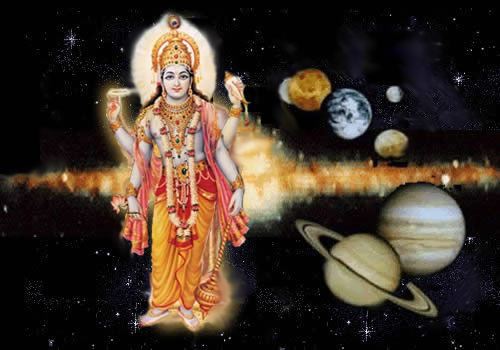
Considering
the
community
of
physicists
in
denial of a relativistic ether the
way Einstein stated it later, it may
be concluded that there is a lot of
natural physicist's theory in
neglect of Einstein, even using his
name in the defense of its denial.
Einstein was evolving, as it should,
with being a good and self-critical
scientist, and thus we can accept
him in the end, filognostically
knowing the error as a challenge for
self-improvement. He, not succeeding
in formulating the 'theory of
everything', had to contend with
internal inconsistencies and so we had to after
him. Therefore it is also possible
that the inability to detect
deviations in the speed of light can
be caused by the moving along, of
the earth, on the stream of energy
of the ether. The element of the
ether would (according to Descartes)
lead to energy vortexes which, just
as with something floating down a
river, do not result in a
relative motion between the ether
and the earth, and hence there would
not be any effect on the measured
speed of light. This is a position defended
by people at the edge of science who are often portrayed
as pseudoscientists: Nikola
Tesla (1856-1943), Viktor
Schauberger (1885-1958), Wilhelm
Reich (1897-1959) and John
E.W. Keely (1827-1898). The latter
one wrote in 1893: 'There is no
dividing of matter and force into
two distinct terms, as they both
are one. Force is liberated
matter. Matter is force in bondage'.
These scientists tried to
demonstrate that ethereal energy, or
'orgone energy' as Reich
demonstrated to Einstein, even
though invisible, is very real (see
also J. Medeo). Keeping in mind the
modernity of quantum physics also
speaking in these terms of
indeterminate energy, we thus may
ask ourselves what factually real
science would be. There is a
paradigmatical struggle, but to say
what would be true, is for time to
tell. Error can be terror (E=M x
(T)error2), science and
politics are, just like religion and
the state, only separated by
principle, not in reality. We are
warned about error in science and
matters of the ego, especially in
mathematics deriving from possibly
wrong suppositions as the
non-existence of the ether or
imaginary constants. In the nineties there was
e.g. a news item about astronomers
who thought to have discovered
planets around a star. They later on
really did, but at that time the
deviation in the so-called parallax
of their measurements was wholly
attributable to the erroneously not
reckoning with the
equation of time, which is the consequence
of the oblique axis of the earth and
the noncircular orbit of the earth
around the sun. Thus they made a
fool of themselves with a false
alarm of significant results.
The
idea
basic
to
this
doubt,
is that the mathematical angle
constitutes a reductionistic way of
reasoning in which one is never
certain of one's subject, since
information was lost in the
reduction. The term A in an equation
is not necessarily the same as an A
elsewhere in the equation or in
another equation. That also is
relativity and lawfulness. With A
unequal to A, a good Apple is not
equal to a rotten Apple, the
illusion of order as suggested by
mathematics finds its
end, or, as psychologists like B. F.
Skinner (1904-1990) states it: 'one
will
have to accept the complexity of
the universe and admit that not
everything can be known or reduced
to a formula'.
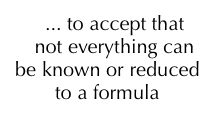
In what respect Einstein
specifically is correct or not in
the end, whether the doubt as
mentioned and the experimenting is
justified and correct or not,
certain is that time as the
controlling factor - linked to the
place in what we call space-time - indeed, logically seen,
must be relatively dependent, like
also the speed of light depends on
the medium through which it travels.
And that constitutes a second
argument against the politicized
relativistic justification
maintained for time zones, for
instance, in which, to the contrary,
time is separated from place. In
other words: to use Einstein to
reject the absolute of time, next
declare that time depends on the
frame of observation, or the place,
and then again with the same
relativistic argument arrange for
time zones in which is broken with
the dependency to the place, is of
course, more than anything else, an
exercise of fearful, neurotic and
compulsory behavior in running away
from Father Time. Lorentz must have
been right with his, by us at this
site therefore respected, local,
true time clocks directed at the ether,
and not Einstein with his exception
which resulted from the denial of
the ether. One may defend that time
is absolutely relative and that
there is a law of time stating that
the time and all that links to it,
must be different always because of
the element of movement proper to
it, but to simply endlessly
manipulate time as a dependent
variable, must certainly be regarded
as being a form of denial concerning
the, with all one's matter, being
subjected to time as an independent
variable, an agent which, apart from
being creative and maintaining, is
also evidently destructive.

If we do take the criticism serious, the
einsteinian fallacy seems
to consist of confusing speed with
change. Speed is not an absolute
value, not as absolute as the sacred
three of the basic elements of
physics are, viz space, time and
matter. The with space-time
manifesting matter, offers those
three elements, which as the
physical trinity of God define each
other and cannot be reduced to
something else. With the philosopher
D. Hume (1711-1776) in An
Enquiry Concerning Human
Understanding, they are called extension,
motion
and
solidity,
and with Vyâsadeva, akas'a,
prakriti and kâla.
They constitute each other's
condition of existence in creation,
one cannot think of one without the
other. Time is the life, the
movement of matter in space. Space
is the distance of time, the
phenomenon of gravity, in between
material objects. Matter is
the electromagnetic effect of the
influence of time on the potency of
expanding space, the time which,
from being linear by the law of
reaction, became cyclic and thus, in
opposition, transformed the gravity,
the primal potency thus, into solid
matter (be it not entirely, as
evidenced by the inability to find
the so-called invisible 'dark
matter', which according to S.B. 5.20:
38, covers three quarters of
our creation). The entire creation
is a permutation of the concepts of
time, space and matter. Energy e.g.
is an electromagnetic phenomenon of
spaced-out matter, the matter which
of being purely hot energetic plasma
in the beginning, concentrated or
condensed into gas and vapor, next
became fluid and after that
solidified into matter, to which
light is then the least dense, the
fastest of matter in the beginning.
Vedically is it called 'the glance'
of the Lord (S.B. 2.1: 31), and in the Bible it is,
in Genesis, said that there was
light in the darkness. Space is the
gravitational phenomenon which sets
the limits, either to matter in the
form of stars and planets in curved
space - the ether we cover with our
radios, or to the Milky Way in the
ethereal space we can see with our
naked eye in the celestial sky, or
the cosmic time-ball of expanding
galaxies as we may see with a
telescope as grouped together in the
primal realm of time space, where
one does not really find actual
matter yet, but just the energetic
potency for it. And also time we
thus know in three, just like space
and matter: the linear movement of
the primal substance as we find it
in the expansion of the cosmos, the
movement of the matter which,
opposite to that, spins around,
mutually attracted in a galaxy, and
the movement through space-time of
the 'timeless' but living soul,
figuring as the 'no-time' of time
consciousness, which constitutes the
negation of matter, and which, false
in identification, with the
inauthentic person forms an ego.
Space, the relative phenomenon of
gravitation, is the ether; matter is
the electromagnetic manifestation,
and time is the life of it all. That
is the physical basis of a factually
perceivable complete whole for all
our arguments.
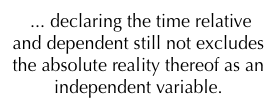
- "Thus he
then classified
living creatures
into genera and
species, and divided
them in every way
until he came to
their elements,
which he called the
five shapes and
bodies, aether,
fire, water, earth
and air."
Xenocrates
on the life of
Plato
|
As
for Einstein's erroneous supposition
it is, as thus envisioned, the speed
that changes, like everything
subject to time. That is the law
of time: the change is the
absolute, not that what changes.
The change
stays the change, even though it
changes, just like space or ether stays the space or ether,
even though situated elsewhere, and
in the end matter also turns out to
be absolute, not in its temporary
form, but as an electromagnetic
phenomenon of energetic contraction,
without which the first two carry no
meaning, even when it is as thin as
light. Something
apparently invariable and constant,
like a quasar for instance,
constitutes an illusion: it some
time found its existence and will,
by the law of time, some time cease
to exist, and thus is not absolutely
existing. Therefore, no, Einstein, even though we accept
his being committed to the
relativistic ether, cannot be the
lead for a responsible philosophical
plea for a certain order of time. We must build on the
absolute of time, the absolute of
change existing as the eternal life
of all matter in space.
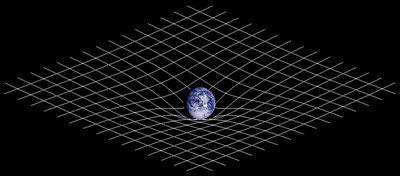
Reasoning methodically
consequent, the counter-argument here,
to the
doubting of the absolute of time at
this point, says that declaring time
relative and dependent still not
excludes the absolute reality
thereof as an independent variable.
Or, as dualistically Immanuel
Kant (1724-1804) would say: time for
itself, unknown as it is in its full
glory - according to also the french
philosopher Henri
Bergson (1859-1941) - is factually
not in need of your existence to
exist itself, while time on itself,
the way you live it as an experience
of being - discussed then again by
the existentialist Martin
Heidegger (1889-1976) - essentially has no real
grip on it, despite of all
politically and pragmatically
inspired manipulations. That time,
lived and controlled, implies only,
as known from Hegel, the realization
of being estranged, when one has to
abide without the scientific virtue
of validity and reliability, the way
it manifests itself in the modern
arbitrariness of standard time since
the French Revolution with its
failure of time reform. As a
conclusion time thus, axiomatic, as
already defended by the oldest
culture of India as an independent
variable, is an absolute of change
and a determinant of the ether, as a
form of God, our general
thesis, and the doubt concerns then
the self-determined conditioning
order with it, which is naturally
relative and possibly of a good or
bad quality we can discuss.
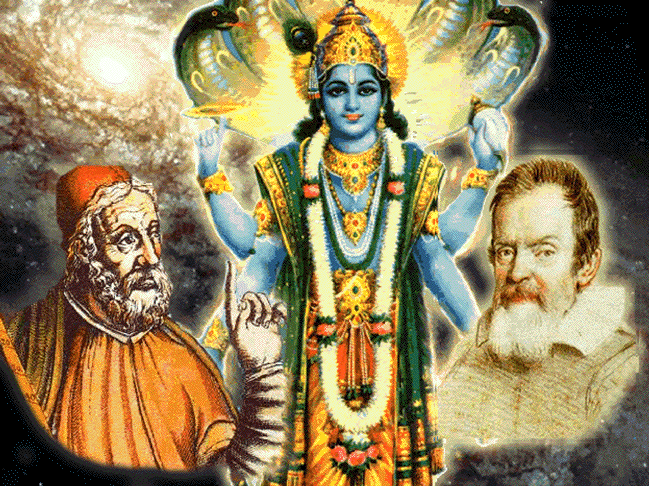
Summarizing the general thesis of
filognosy then amounts to
time as an independent godhead,
force or order, that since the days
of yore, the way we know it from
India, is present as a, for the
creation, maintenance and
destruction, all-determining factor
in our lives. The antithesis of
relativism concerns the pragmatical
need for a knowable, existentially
livable, controlled time, we have to
consider as being relative. Facing
the two positions of the natural
absolute of time and the cultural
relative maintained thereto, we thus
arrive at the insight that we are
dealing with a paradigmatic matter
which compares to the classical
difference between geocentric and
heliocentric thought. First we
thought that we according Ptolemaeus (87-150), with God and
Jesus on earth, were the center of
the universe, and then we thought,
since the bravery of Galileo
Galilei (1564 -1642) who to the
ideas of Copernicus (1473 - 1543) contested
geocentric Rome, that the sun was
the center of the universe, and thus
found our new era of scientific
enlightenment. With the progress of
astronomy we next discovered
our place in the galaxy, and now,
being tired of the politically
divided and quarreling - but still
predominantly - heliocentric
oriented sciences with their
compensatory relativism, it seems
that with us taking seriously the
differences of the light speed that
in inconclusive experimenting were
found in the absence of a conclusive
paradigm, we, together with the sun
indeed are moving through a medium
called the ether. May the Force be
with us; for we have now arrived at
galactocentric thinking, the new
paradigm for the 21th century, which
defines us as being moved by an
all-powerful force that controls as
well the earth, the moon and the sun
as the rest of the stars, a force
moving us in the galactic whirl
about the black hole in the center,
the mountain Meru of Vishnu and
Brahmâ, the eye of the universal
storm created by the holy and
absolute Force, the Force of the
Absolute of Galactic Cakra (cyclic)
Time which in its operation is known
as the ether, the first effect in
creation (Brahma Sûtra Adh2.P3:
1-7). The evolution of the
ether is by sage Vyâsa described as
follows: 'From the identification
[of the ego] with the darkness of
matter of the transformation to
that mode the [first element of
the] ether was
developed with its subtle form and
quality of sound, which is
indicative of both the seen and
the seer.' (S.B.
2.5: 25). In S.B.
11.15: 19 he then states that the
Lord must be considered the
personification of the ether and, in
S.B.
3.5: 32, that the ether may be
considered the symbolic
representation of the Supersoul, the
local of God, who impersonally is
known as the Time. Relating to the
concept of time he then states (S.B.
3.26:
34): 'The activities and
characteristics of the element of
the ether accommodate for the room
external and internal, being of
all living beings the field of
activities of the vital air, the
senses and the mind.'
According to him the ether thus refers to
both the 'timeless' self of the
consciousness of time and to the
time-bound reality of the outside
world. So there is, also in
consideration of the spiritual
department, therefore a relative
ether.
'For
a
truly
joyful
and auspicious human work
to flourish, man must have
the capacity to climb from
the depths of his
attachment at home up to
the ether. Ether here
stands for the high flight
of the high heavens, the
open real of the spirit.'
Martin
Heidegger, 'Treatise on
human thought'
|
 With this paradigmatic
shift we, thus methodically
proceeding, are thus faced with the
counterargument leading to the
conclusion that says that the order
of time now can be discussed in its
paradigmatic qualities and effects.
Like geocentric thinking proved to
be inferior to heliocentric thought,
now heliocentric thinking the same
way may be
inferior to the paradigm of
galactocentric thought in unfolding
the knowledge, in this and in the
next sections, of our filognosy
concerning the order of time with
the ether. For it is that new
paradigm that counts with a
(circular) movement of the stars,
the earth and the sun through the -
and let's stress this again - from
the Vedic culture thus already known
basic element of the ether (kha
or akas'a), which represents
both the forcefield of the galaxy,
the primal space-time, and the local
order; the forcefield that possibly
- but not necessarily - results in
the variations in the light speed
found in the different experiments,
and about which Einstein around 1920
said that he, in 1905, had passed a
somewhat too radical judgement. When
with that discussion, and supported
by scientific experiment, next the
entire problem of modern man is
summed up and comprehended, we thus
have succeeded
in our methodical purpose and have
arrived at a new paradigm for the
twenty-first century, a paradigm
which resets the world culture to
its classical values, and cures
(post-)modern, estranged man from
his bewildered state. With this paradigmatic
shift we, thus methodically
proceeding, are thus faced with the
counterargument leading to the
conclusion that says that the order
of time now can be discussed in its
paradigmatic qualities and effects.
Like geocentric thinking proved to
be inferior to heliocentric thought,
now heliocentric thinking the same
way may be
inferior to the paradigm of
galactocentric thought in unfolding
the knowledge, in this and in the
next sections, of our filognosy
concerning the order of time with
the ether. For it is that new
paradigm that counts with a
(circular) movement of the stars,
the earth and the sun through the -
and let's stress this again - from
the Vedic culture thus already known
basic element of the ether (kha
or akas'a), which represents
both the forcefield of the galaxy,
the primal space-time, and the local
order; the forcefield that possibly
- but not necessarily - results in
the variations in the light speed
found in the different experiments,
and about which Einstein around 1920
said that he, in 1905, had passed a
somewhat too radical judgement. When
with that discussion, and supported
by scientific experiment, next the
entire problem of modern man is
summed up and comprehended, we thus
have succeeded
in our methodical purpose and have
arrived at a new paradigm for the
twenty-first century, a paradigm
which resets the world culture to
its classical values, and cures
(post-)modern, estranged man from
his bewildered state.
'Therefore
I
thought
in
1905 that in physics one
should not speak of the
ether at all. This
judgement was too
radical though as we
shall see with the next
considerations about the
general theory of
relativity. It moreover
remains, as before,
allowed to assume a
space-filling medium if
one can refer to
electromagnetic fields
(and thus also for sure
matter) as the condition
thereof.'
A.
Einstein
in
'Grundgedanken und
Methoden
der
Relativitätstheorie
in ihrer Entwicklung
dargestellt'
|
See
also: references

2-
The Order of Time: structure of
the content
If we want to discuss the
qualities and effects of the order
of time methodically, we, as was stated
in the preface, must, being syncretic
out of loving the knowledge, from
the filognosy, pay attention to
science, as also to spirituality and
religion. Syncretic thinking is the
essence of the concept of gnosis,
thus teaches us the classical
spirituality of Christianity. The
internet-encyclopedia (en.wikipedia.org) states that gnosis,
to the authority of Gilles
Quispel (1916) - an authoritative
dutch researcher of classical and
christian gnosticism - as a
characteristic of religious
movements, is counted as the 'the
third component of western culture',
next to reason and belief. Next to
greek philosophy and Christianity
also the gnosis, which we in
a Christian sense know since the
second century, would have
contributed considerably to the
culture of Western Europe. 'Reason
rules the domain of truth and
wisdom, theology, rules the domain
of piety and obedience' says
B. de
Spinoza (1632 - 1677) in his Theological-political
treatise, to which he rejects
the mutual obligation of the two,
but we, filognostically, from our
love of knowledge, defend that
reason and belief are mutually
obliged, knowingly in the gnosis in
which dissection and principle, or
analysis and spirituality,
constitute the bridge between
science - the perspective which
methodically uncovers the truth and
in wisdom detemines which fact and
paradigm would be of importance -
and the art of the person (the
theology) of religion, which strives
for piety with the political
representation of the populace which
democratically enforces obedience.
With us linking the concept of gnosis
to the Vedic culture, 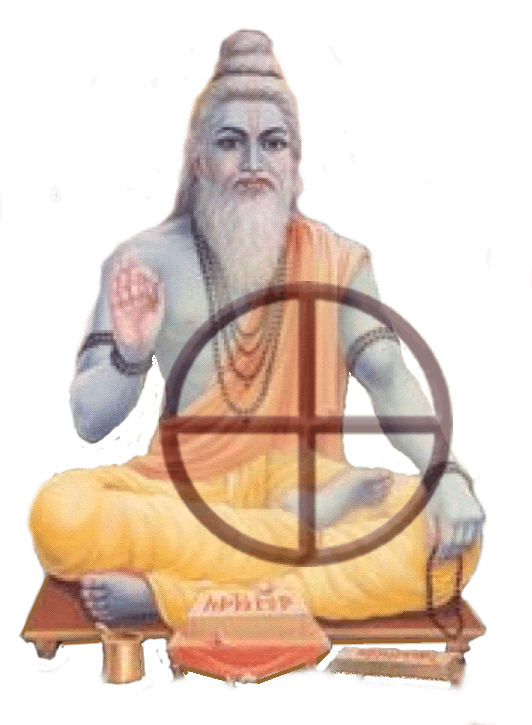 we thus, without losing
ourselves in this or that gnostic
tradition, or finding ourselves
compromised by it heretically, will unfold
here a world view in which all
culture finds its reconciliation.
The gnostic person is typically
described as someone who seeks to
know God, on an intimate basis, by
the pursuit of self-knowledge or by
the nurturing of self-awareness; the
filognostic person, or filognostic,
then is the one who is of love for
this from the point of view of Vedic
truth. Filognosy as a form of gnosis
is, contrary to the western
classical view of gnosis, not
secret, even though, on the Vedic
ground of the succession in aso-called paramparâ, a personal transfer of
the love for knowledge is considered
conducive and advised, and is it
surely also a matter of great
importance to be in respect of a
certain confidentiality and
discretion concerning the science of
the person. It is not polemic or
anticlerical, it is based on all
kinds of scientific facts and is of
belief, on the basis of the Vedic
tenet, that human recollection and
the ability to acquire and process
knowledge always falls short and
that therefore scriptural authority
is needed. Contrary to classical
gnosis there is thus no propensity
for anarchy, but positively a
certain degree of docility there
concerning a certain original person
of spiritual authority, viz. the
philosopher of philosophers Vyâsadeva (±3200 B.C.), the Indian
who in the West sometimes is
denounced as an anonymous, because
his name would stand for a
collection of sages who each on
their turn would have assembled the
Vedic verses. Even though he indeed
incorporates the unification of the
entire field of philosophy and
religion, the evidence for the
denial of his name is to
our opinion inconclusive though,
just like there is neither
sufficient evidence of the so-called
arian invasion of India that would
position the source of Vedic
civilization more outside of India
and closer to us. On the contrary,
it is more the Vedic civilization
that invaded the West. But,
concerning the Vedic culture, it is
a critical docility we work with.
That culture from the Far East not
adopting at it's face value, but
still simply and unequivocally with
a certain lead being absorbed, does
take place then without neglecting
us as being Christians, Muslims or
other minded believers and thinkers.
So it can, for one person, take its
effect very traditionally
hindustan-like, while for an other
person it may be more a nice and
inspiring philosophical exercise, as
it, for even another one, may entail
an enrichment of his of her
spiritual and political life. It is
envisioned that none of our talents
and forms of association of living
scientifically, spiritually and
multi-culturally believing, is lost
in recognizing Vedic science as a
source of inspiration and root of
human civilization. The doctrinary
effort of the filognostic world
view, as unfolded at this site,
concerns partly the opposing of all
possible kinds of falsification, or
false unification of the ego,
whether it concerns the
falsification of
class-consciousness, political
consciousness, religious
consciousness or the more scientific
forms of arrogance,
narrow-mindedness and estrangement.
B we thus, without losing
ourselves in this or that gnostic
tradition, or finding ourselves
compromised by it heretically, will unfold
here a world view in which all
culture finds its reconciliation.
The gnostic person is typically
described as someone who seeks to
know God, on an intimate basis, by
the pursuit of self-knowledge or by
the nurturing of self-awareness; the
filognostic person, or filognostic,
then is the one who is of love for
this from the point of view of Vedic
truth. Filognosy as a form of gnosis
is, contrary to the western
classical view of gnosis, not
secret, even though, on the Vedic
ground of the succession in aso-called paramparâ, a personal transfer of
the love for knowledge is considered
conducive and advised, and is it
surely also a matter of great
importance to be in respect of a
certain confidentiality and
discretion concerning the science of
the person. It is not polemic or
anticlerical, it is based on all
kinds of scientific facts and is of
belief, on the basis of the Vedic
tenet, that human recollection and
the ability to acquire and process
knowledge always falls short and
that therefore scriptural authority
is needed. Contrary to classical
gnosis there is thus no propensity
for anarchy, but positively a
certain degree of docility there
concerning a certain original person
of spiritual authority, viz. the
philosopher of philosophers Vyâsadeva (±3200 B.C.), the Indian
who in the West sometimes is
denounced as an anonymous, because
his name would stand for a
collection of sages who each on
their turn would have assembled the
Vedic verses. Even though he indeed
incorporates the unification of the
entire field of philosophy and
religion, the evidence for the
denial of his name is to
our opinion inconclusive though,
just like there is neither
sufficient evidence of the so-called
arian invasion of India that would
position the source of Vedic
civilization more outside of India
and closer to us. On the contrary,
it is more the Vedic civilization
that invaded the West. But,
concerning the Vedic culture, it is
a critical docility we work with.
That culture from the Far East not
adopting at it's face value, but
still simply and unequivocally with
a certain lead being absorbed, does
take place then without neglecting
us as being Christians, Muslims or
other minded believers and thinkers.
So it can, for one person, take its
effect very traditionally
hindustan-like, while for an other
person it may be more a nice and
inspiring philosophical exercise, as
it, for even another one, may entail
an enrichment of his of her
spiritual and political life. It is
envisioned that none of our talents
and forms of association of living
scientifically, spiritually and
multi-culturally believing, is lost
in recognizing Vedic science as a
source of inspiration and root of
human civilization. The doctrinary
effort of the filognostic world
view, as unfolded at this site,
concerns partly the opposing of all
possible kinds of falsification, or
false unification of the ego,
whether it concerns the
falsification of
class-consciousness, political
consciousness, religious
consciousness or the more scientific
forms of arrogance,
narrow-mindedness and estrangement.
B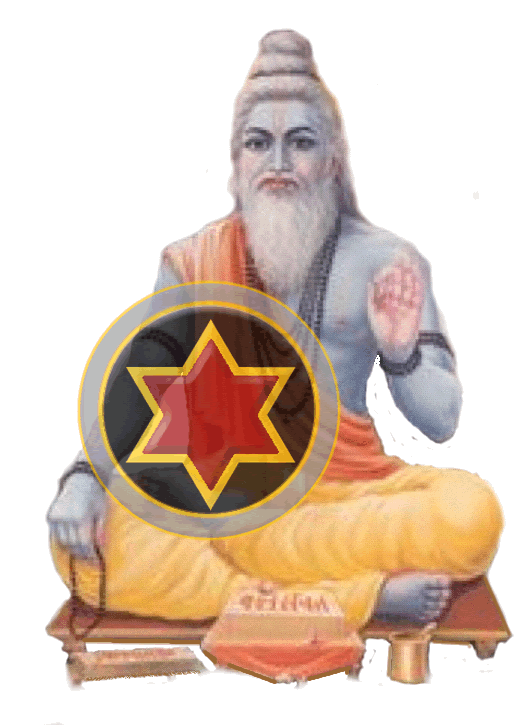 y the, with this
postmodern restart, of gnosticism
therein having envisioned a
constructive spiritual
reconciliation of science and
religion, there for each of the
three holy subjects of science,
spirituality and religion mentioned
- which respectively deal with the
facts, the principles and the
respect for the person - is a
duality which thus at this site
results in a division of six
sections. These six sections
correspond with the in India used darshanas of the six classical
philosophical views there are to
counter the human propensity for
falsifying the I-awareness of the
soul and thus also of a certain
order of time with the ether. The nyâya
of the logical approach in India,
was translated into the
methodical/structural philosophical
considerations of this section. The
vais'eshika of the more
atheistic indian mind of unification
was translated into the figures and
terms of sober natural science. The
sânkhya of analytical
philosophy was translated into an
analytic section focussing on art.
The yoga of finding
absorption was translated into the
spirituality of developing a certain
abstract ability. The mimâmsâ
of the culture of rituals was
translated into personal and
religious considerations, and the vedânta
culture of the commentaries was
translated into the spirit of
political reform. These visions thus
have in common 1) a continuing self,
2) a workload, 3) liberation in
service, and 4) a culture of
reference. The identity and
integrity of filognosy is hence
described in six aspects, about the
way the empiricist D. Hume (1711-1776) divided
knowledge his way (see further the definition). y the, with this
postmodern restart, of gnosticism
therein having envisioned a
constructive spiritual
reconciliation of science and
religion, there for each of the
three holy subjects of science,
spirituality and religion mentioned
- which respectively deal with the
facts, the principles and the
respect for the person - is a
duality which thus at this site
results in a division of six
sections. These six sections
correspond with the in India used darshanas of the six classical
philosophical views there are to
counter the human propensity for
falsifying the I-awareness of the
soul and thus also of a certain
order of time with the ether. The nyâya
of the logical approach in India,
was translated into the
methodical/structural philosophical
considerations of this section. The
vais'eshika of the more
atheistic indian mind of unification
was translated into the figures and
terms of sober natural science. The
sânkhya of analytical
philosophy was translated into an
analytic section focussing on art.
The yoga of finding
absorption was translated into the
spirituality of developing a certain
abstract ability. The mimâmsâ
of the culture of rituals was
translated into personal and
religious considerations, and the vedânta
culture of the commentaries was
translated into the spirit of
political reform. These visions thus
have in common 1) a continuing self,
2) a workload, 3) liberation in
service, and 4) a culture of
reference. The identity and
integrity of filognosy is hence
described in six aspects, about the
way the empiricist D. Hume (1711-1776) divided
knowledge his way (see further the definition).

Thus it may, as stated
in the preface, be clear that this linear
presentation, as one would need for a
book, carries in it's wake a causal
suggestion that one must relativize:
in reality one thing does not follow
as closely another thing, for reasons
of which the interface at the
index-page of the site knows a more
intuitive setup. A book and a site,
reasoning from a beginning to an end,
thus constitutes, the way it is set up
here on the basis of a classical
division - and thus being valid, a
perfect illusion of causality; an
illusion not in the sense of being
wrong, but an illusion in the sense of
being an exclusive line of reasoning.
With the elements given, there are
more possible lines of arguing. So
reasoned Auguste Comte (1798-1857), the father of
positivism precisely obverse to the
above substantively described
filognosy that looks more like the one
of Søren
Kierkegaard (1813-1855), which goes
from the esthetic to the ethical, to
the religious. According Comte one
arrives from the theology of the
person, lawfully through the
metaphysical stage of principles and
the abstract of 'nature', at the sober
positive stage of the factual reality,
that on itself knows no origin or
purpose anymore. But the law of life
and time has more causal directions
thus than the lines of Comte and
Kierkegaard. As we
already indicated in the preface,
the end namely,
in the cyclic nature of knowledge,
makes for another begin again, and
constitute also, the way back,
reasoning from the end to the
beginning, the order found in an
intuitive arbitrariness, and the
argument dissipating from a nucleus,
as in a tree structure, equally
valid forms of progressing in causal
reasoning. It was the greek
philosopher Aristotle (384-322 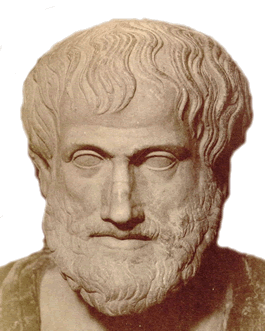 v. Chr.) who, concerning
this, in his Physics
discriminated four different types of
causality: to the substance,
like in 'the bronze precedes the
bronze statue', to the determining
form, as in 'the form of a horse
is essential to all horses and the
cause that we name them thus', to the
doer, like in 'the artist
constitutes the cause of his
creation', and the causality of the norm,
as in 'I stroll for my health and that
is the cause of my strolling'. In
Vedic logic we find all these four
forms of causality back in the form of
the purusha as the
soul, the essence of the person of the
creation, who in creation precedes the
ego as the substance thereof, in the avatâra,
the god who assumed the human form
and thus liberated, in kâla
as the doer moving, creating and
conditioning everything and in dharma,
the norm of the necessity of the
justice of God constituting the cause
of the piety and the pious person of
knowledge. This way also
filognostically it is not so easily
said that (normative) just the
religion or the dharma leads
to the science of the spiritual
person, since the other way around the
purusha or the (original)
person of knowledge himself again is
also the cause of it, according to the
illusion of the (substantive)
causality that we here adhere to in a
linear sense. So also the avatâra
is there
time and again as a tree of knowledge
from which (formative), like from the
index-page of the site, sprouts all
philosophy, spirituality and religion
with Him as the stem and kernel, and
is also the impersonal of the
spirituality there relating
to the time factor kâla that,
as employed in the isolated articles
of this site, constitutes the
(constructive) cause of the intuitive
way of learning. A striking example
of, more symbolically in this case,
reasoning backwards in a literal sense
to what for others would be the
beginning, is offered by the
renaissance painter, inventor and
scientist Leonardo
da Vinci (1542-1519). He, as a
principle combining the esthetic and
the intellectual motive in an
inventive way, habitually, just like
some eastern cultures, wrote and read
his books, sentences and words
backwards, with which he on itself did
not cover the double sense of the
ambiguity of the four causal lines of
reasoning of course. Another example
one can observe in movies which
sometimes begin with the denouement,
with flash backs, and double plots, or
are cut in a mix of their episodes, as
if it concerned, like in the movie Memento of Christopher Nolan from
2000, someone with a deficient
short-term memory who does not even
know the order of time anymore. v. Chr.) who, concerning
this, in his Physics
discriminated four different types of
causality: to the substance,
like in 'the bronze precedes the
bronze statue', to the determining
form, as in 'the form of a horse
is essential to all horses and the
cause that we name them thus', to the
doer, like in 'the artist
constitutes the cause of his
creation', and the causality of the norm,
as in 'I stroll for my health and that
is the cause of my strolling'. In
Vedic logic we find all these four
forms of causality back in the form of
the purusha as the
soul, the essence of the person of the
creation, who in creation precedes the
ego as the substance thereof, in the avatâra,
the god who assumed the human form
and thus liberated, in kâla
as the doer moving, creating and
conditioning everything and in dharma,
the norm of the necessity of the
justice of God constituting the cause
of the piety and the pious person of
knowledge. This way also
filognostically it is not so easily
said that (normative) just the
religion or the dharma leads
to the science of the spiritual
person, since the other way around the
purusha or the (original)
person of knowledge himself again is
also the cause of it, according to the
illusion of the (substantive)
causality that we here adhere to in a
linear sense. So also the avatâra
is there
time and again as a tree of knowledge
from which (formative), like from the
index-page of the site, sprouts all
philosophy, spirituality and religion
with Him as the stem and kernel, and
is also the impersonal of the
spirituality there relating
to the time factor kâla that,
as employed in the isolated articles
of this site, constitutes the
(constructive) cause of the intuitive
way of learning. A striking example
of, more symbolically in this case,
reasoning backwards in a literal sense
to what for others would be the
beginning, is offered by the
renaissance painter, inventor and
scientist Leonardo
da Vinci (1542-1519). He, as a
principle combining the esthetic and
the intellectual motive in an
inventive way, habitually, just like
some eastern cultures, wrote and read
his books, sentences and words
backwards, with which he on itself did
not cover the double sense of the
ambiguity of the four causal lines of
reasoning of course. Another example
one can observe in movies which
sometimes begin with the denouement,
with flash backs, and double plots, or
are cut in a mix of their episodes, as
if it concerned, like in the movie Memento of Christopher Nolan from
2000, someone with a deficient
short-term memory who does not even
know the order of time anymore.
Contents of part I: the
factual
The first of the three
basic dualities of filognosy
concerns the rational method versus
the empirical science, to cope with
the facts of life. One speaks of
methodical science: first one makes
up one's mind and next one engages
in an empirically responsible
fashion. In this department the
agnostic element is stronger
than the gnostic one. With reason
and the experiential data 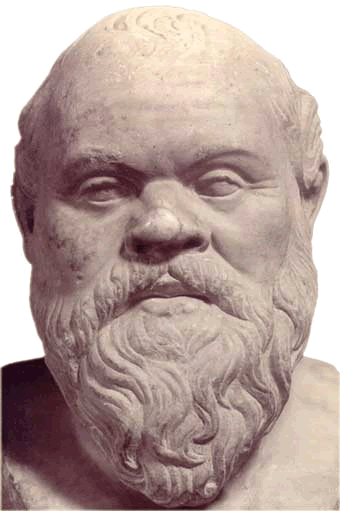 we herein gradually arrive
at the basic attitude and structure
facilitating a, more to the
principles directed, spiritual life
and a society more conscious of the
person. The agnostic basic attitude
of being open and neutral to, or
else staying skeptic, as in
modernity is defended by the
biologists T. H.
Huxley (1825 -1895), Charles
Darwin (1809-1882) and the
philosopher Bertrand
Russell (1872-1970), can, in her
servitude being just as commendable
as the other visions, more or less
be considered a precondition to
arrive at essential, filognostical,
knowledge or knowledge of the
complete whole. It was also Plato (428-347 B.C.) who, as
one of the first greek philosophers,
by mouth of Socrates (470-399 B.C.) in
allegiance to this principle of
science in his discourse The
Defense of Socrates, managed
to state that he was only sure not
to know. It was that honesty that
resulted for Socrates, as an early
Christ of philosophy, in a cup of
poison, because he, spoiling the
young with it, thus demonstrated
that the power of rule, in spite of
their pretenses, actually also did
not know, and thus was less wise
than he who did know this. we herein gradually arrive
at the basic attitude and structure
facilitating a, more to the
principles directed, spiritual life
and a society more conscious of the
person. The agnostic basic attitude
of being open and neutral to, or
else staying skeptic, as in
modernity is defended by the
biologists T. H.
Huxley (1825 -1895), Charles
Darwin (1809-1882) and the
philosopher Bertrand
Russell (1872-1970), can, in her
servitude being just as commendable
as the other visions, more or less
be considered a precondition to
arrive at essential, filognostical,
knowledge or knowledge of the
complete whole. It was also Plato (428-347 B.C.) who, as
one of the first greek philosophers,
by mouth of Socrates (470-399 B.C.) in
allegiance to this principle of
science in his discourse The
Defense of Socrates, managed
to state that he was only sure not
to know. It was that honesty that
resulted for Socrates, as an early
Christ of philosophy, in a cup of
poison, because he, spoiling the
young with it, thus demonstrated
that the power of rule, in spite of
their pretenses, actually also did
not know, and thus was less wise
than he who did know this.
Contents of section 1a:
the method.
The method thus, firstly,
consists of the charter as is
described on the
previous page in which we get
acquainted with the doubt, the
division, the complexity and the
completeness as principles of
systematic proceeding.
Directly thereafter, on the
basis of our general thesis that we
can manage perfectly departing from
the Vedic concept of order, we
arrive at the division of this site,
of which these last paragraphs are a
part and of which the elements later
on will be subjected to the method.
With the method we need to draw a
plan of action in order to
investigate, as good as we can, all
possible aspects to our problem - to
have for us, responsibly, a
sustainable life with the ether.
After having clarified this we must,
methodically seen, also introduce
the dialectical approach.  For the dialectical nature
of the game of questions and
answers, in order to enliven the
knowledge, is not just a fundamental
principle of the philosophy we know
from Socrates and Plato, but is also
a fundamentally Vedic principle of
questioning and answering in
relation to the spriritual
authority. In the Bhagavad Gîtâ
(10: 32) Vyâsa by mouth of Lord
Krishna states
that it, as for him,
is all about the identification of
Him with the dialectics of all
argumentation. Simply said is, as
far as he is concerned, the person
properly respected with a
socratically responsible game of
questions and answers. Also the
entire Bhâgavata
Purâna, the Krishna-bible of the
Hindus, also called the S'rîmâd
Bhâgavatam (as from now indicated with
S.B.), consists of a frame
story presented dialectically. Less
monologues, more conversation is the
holy message here. To put this then
first in the presentation of a site
that, in answering to a general call
for knowledge, inevitably time and
again tends to monologues and
discourses, we present thereto some
correspondence which, self-initiated
or not - as an email-exchange, was written in response
to the internet presentation of this
knowledge. The knowledge at this
site has also found it's existence
in response to what through the
internet was presented. It is for
that reason that sometimes acute
themes as aids and what could be
seen in the cinema or in the
political arena prevailed over more
academically demanded themes. For the dialectical nature
of the game of questions and
answers, in order to enliven the
knowledge, is not just a fundamental
principle of the philosophy we know
from Socrates and Plato, but is also
a fundamentally Vedic principle of
questioning and answering in
relation to the spriritual
authority. In the Bhagavad Gîtâ
(10: 32) Vyâsa by mouth of Lord
Krishna states
that it, as for him,
is all about the identification of
Him with the dialectics of all
argumentation. Simply said is, as
far as he is concerned, the person
properly respected with a
socratically responsible game of
questions and answers. Also the
entire Bhâgavata
Purâna, the Krishna-bible of the
Hindus, also called the S'rîmâd
Bhâgavatam (as from now indicated with
S.B.), consists of a frame
story presented dialectically. Less
monologues, more conversation is the
holy message here. To put this then
first in the presentation of a site
that, in answering to a general call
for knowledge, inevitably time and
again tends to monologues and
discourses, we present thereto some
correspondence which, self-initiated
or not - as an email-exchange, was written in response
to the internet presentation of this
knowledge. The knowledge at this
site has also found it's existence
in response to what through the
internet was presented. It is for
that reason that sometimes acute
themes as aids and what could be
seen in the cinema or in the
political arena prevailed over more
academically demanded themes.
Thereafter follows a page
which to the point answers the most
obvious questions
and answers concerning the order of
time as a game of social
interaction, a game with which we
are able to respect the person in
his different positions in life (see
also the GameWiki for this). Next to that
is there on the site also a page
with vacancies where different
suggestions are offered for serving
as a volunteer, to be also oneself
of service with the filognosy.
As a direct result of
those, classically understood,
dialectics, to complement this first
section of the site, the social
definition must be offered. What is the use of all
knowledge brought together here if
we cannot find our fellow man with
it in the first place? There is
for that reason concerning this
subject a decided consideration on a
page separately, dedicated to what
we actually think of ourselves as
social beings.
The content of the Order of
Time in a cultural sense is in
general terms summarized at this and
the other introductions to the
different sections. All are given a
synopsis at a page with six
dialogues in which to the content
of the different sections the most
important issues to remember are
regurgitated. For a quick
orientation to the content-matter
one can best begin with this 'level
one' by reading these pieces
first and just then study the
separate articles. The introductions
naturally have a more general
character and offer as a preparation
for the specific studies per chapter
a broader reference concerning the
present-day and historical societal
views and people. The site itself
was more or less intuitively at the
same time from the different
sections diffusely build up - as it
were chiseled out - and can so thus
one step at a time be read, just
like one does when one gently sits
down into a hot tub.
Relevant
links:
- Quantum
Aether dynamics Institute by Jim D, Bourassa: the
present day revival in modern physics
concerning the ancient ether. This
site presents the Aether Physics Model
as the third great breakthrough in
science after Dalton's Atomic-theory
and Einstein's Relativity Theory.
- Modern
Theories of the Ancient Aether : a collection of articles
by maountain man graphics site.
- Anti-relativity.com: A careful examination of
experimental evidence for and against
special relativity.
- The
Neutral Center and the Aether
Spectrum: This file describes a long
standing view of how aether creates
and sustains all matter and energy
manifestations.
-
Zero-point energy: tapping energy from the
ether with devices. The troubles of
scientific progress; see in this
respect also Equinox:
It runs on water.
- Rethinking
Relativity: by Tom Bethel: 'the speed with which
the force of gravity propagates must
be at least twenty billion times
faster than the speed of light'.
- Gary Novak,The Truth
about Relativity: 'Relativity is
religion, not science. Physicists
admit there is no logic to it. No
logic; no science.'
- Carel van der Togt
(site): Stellar
Aberration and the Unjustified
Denial of Ether (Pdf)
- Ivrvin
Laszlo: founder of the Club of
Budapest, wrote the book Science
and the Akashic Field: An Integral
Theory of Everything posits a
field of information as the substance
of the cosmos. Using the Sanskrit and
Vedic term for "space", Akasha, he
calls this information field the
"Akashic field" or "A-field". (see
also videospeech)
- Neutrinos
Prove Einstein Wrong: 'this proved relativity
wrong, because the neutrinos could
change into other types while
traveling at the speed of light.'
- Yuri M.
Galaev, Two papers (pdf) on
ethereal wind and ether drift.
- Tom Van Flandern: The
Speed of Gravity &endash;
What the Experiments Say:
Physics Letters A 250:1-11 (1998) This
article
states:
'Recognition of a
faster-than-lightspeed propagation
of gravity, as indicated by all
existing experimental evidence, may
be the key to taking conventional
physics to the next plateau.'
- Albert Einstein: Ether and
the Theory of Relativity an address delivered on May
5th, 1920, in the University of
Leyden.
- Albert Einstein: Zur
Elektrodynamik bewegter Körper, Analen der Physik 17 30
june, 1905 (pdf-file). English: On the
Electrodynamics of moving bodies.
- Albert Einstein: Relativity:
The
Special
and
General Theory, Einstein's own popular
translation of the physics that shaped
our "truths" of space and time.
- Albert Einstein: Space-Time - his article for the
Encyclopedia Brittanica in 1926
- (anonymous) Imminent
falsification of Special
Relativity? Article at ZPenergy.com.
- C-ship:
Relativistic ray traced images: relativistic site about
the Lorentz-contradiction and the
dilation of time.
- Does
Time Fly? Critical article on
relativity and time in general by
Antti Roine, January 15 - December 10,
2005, published in hypography science
forums.
- Hafele
& Keating Tests; Did They
Prove Anything?
- Harry Collins: What's
wrong with relativism? (April 1998) -
Physics World - PhysicsWeb
- Laughing
at the emperor: An education in
theoretical physics today is an
obstacle to thought outside the box.
- M. Consoli and E.
Costanzo, The
motion of the Solar System and
the Michelson-Morley experiment (pdf-file, 26 Nov. 2003).
- Michaelson and Morley: On the
Relativity Motion of the Earth
and the Luminiferous Ether. American Journal of
Science. Pdf-file of the 1887 paper
presenting the results of the
Interferometer experiment.
- The
ether rediscovered!An article that resurrects
the Michaelson-Morley and others,
interferometer experiments. It
mentions Consoli and is also
suggesting that Einstein nicked
Lorentz's theory. New Scientist
Magazine April 2005.
- Relativity
Challenge: Reveals mathematical
mistakes in Einstein's Special
Relativity equations. It also presents
the theory of Complete and Incomplete
Coordinate Systems.
- Relativity
in islam: site claiming that the
Quran has defined the speed of light,
time dilation, black holes and
wormholes.
- Paul
Davies: the website of the
australian astrobiologist claiming the
light speed would have decreased in
our cosmic history.
- Wikipedia on the
Michaelson-Morley experiment.
- Physics -
On Absolute Space (Aether, Ether, Akasa) and
its Properties as an Infinite Eternal
Continuous Wave Medium.
- Aether
Theories - Collation of Modern
Scientific Theories of the Ancient
Aether
- FAQ on
the Aether
- R.F. Norgan: Einstein
was
wrong:
the Aether Theory argument
- Alfred Evert Ether
Physisc and Philosophy: an alternative view
considering evrything a transmutaion
of the one original element of the
ether.
- Vortical
Dynamics: ether - page on an alternative
view of vortexing ether explaing why
there is no effect measurable in the
lightspeed and cyclic time is
essential to it.
- James
Medeo, A
dynamic and substansive
cosmological ether (pdf).
- Prof. Fred L. Wilson
(Rochester Institute of Technology )
Science and Human
Value: Aristotle. Page at Windows
to the Universe, describing the inference
of ether as known from Aristotle.
- Aristotle-
on the soul
- Matter is
made of waves: site building on the
concept of the aether.
- Space-time
distortion proven: a recent
article by Anushka Asthana and
David Smith, Sunday April 15, 2007
in the The Observer.
Off-line:
- M. Consoli, E. Costanzo: From
classical to modern ether-drift
experiments: the narrow window for a
preferred frame. Physics Letters
A, Volume 333, Issues 5-6, 13 December
2004, Pages 355-363.)
- Einstein's
1912 Manuscript on the Special
Theory of Relativity.
- Ludwik
Kostro: Einstein and the Ether: Although Einstein
is widely credited with abolishing the
ether concept, he actually introduced
a new relativistic ether in 1916,
developing the idea in his later
works.
- Articles in the dutch
newspapers:
- Sneller
dan de Lichtsnelheid: Artikel
over Daniel Gauthier door Anouck
Vrouwe 29-10-'05, Algemeen Dagblad.
- Een tegenwind steekt
op voor Einstein. Een artikel
door Martijn van Calmthout over Maurizio
Consoli en het experiment in
Düsseldorf. Volkskrant, 6-08-2005.
- Albert Einstein gaf
de natuurkunde in 1905 met de
beroemde formule E = M x C2 een
geheel nieuw fundament.
Maarten van Rossem naar aanleiding
van het Einsteinjaar 2005. 7-1-2005,
Het Parool.
- Lichtsnelheid.
Prof. dr. C. Dullemond preciseert
het argument van de koppeling van de
lichtsnelheid aan de
fijnstructuurconstante. 24-08-2002,
NRC-Handelsblad.
- Albert Uiteraard
(Gerectificeerd): artikel van
Martijn van Calmthout met een
overzicht van Einstein's leven en
zijn ontdekking van de
relativiteits-theorie. 22-1-2005 de
Volkskrant.
- Wat was de vraag ook
al weer? Martijn van Calmthout
schrijft 11-06-05 in de Volkskrant
over de moderne fysica die de weg in
feite kwijt is.
- Een grote bek tegen
Einstein en de rest. Een
artikel door Martijn van Calmthout
over de strijd van de natuurkundige
João Magueijo tegen de
lichtsnelheids-mythe. Volkskrant,
17-5-2003.
- (Dutch) Vincent
Icke: Niks Relatief: Het
verhaal van een gelovige die nogmaals
probeert de theorie van Einstein uit
te leggen. Gepresenteerd in korte
bondige taal en even zovele formules.
Uitgeverij Contact dec 2005.
To the
images:
- The
two half photos of Albert
Einstein with a question-
and exclamation mark: Einstein more or
less clear in his mathematical
formulations, but questioned by the
research findings.
- 'A
Philosophers Lesson' ca
1766 Oil. The painting pictures the
lesson of the philosopher always
referring to the truth of the
measurable universe and it's time. It
is of the englishman Wright of Derby
(Joseph Wright), 1734-1797 (see
further discussion).
-
The Vishnu between the planets
signifies the relationship between the
vedic point of view and the modern
concepts of a threefold relativistic
ether
-
The little ball in the net is an image
of the earth making a curve in space-time;
the earth is thus also influenced by
the primordial ether.
- The
collage underneath shows
Ptolemeus of the geocentric paradigm,
left, with Galileo Galilei on the
right who brought the heliocentric
perspective, and in the middle Vishnu,
the Hindu-godhead who is seen as
Vâsudeva, the god of the celestial
sky, with the cakra in His hand, the
order of cyclic time as one of His
weapons. Ptolemeus refers to it,
Galilei found in his truth his support
and Vishnu himself stands for the
classical truth of the galactocentric
way of thinking.
- The
whorl is a photo of a galaxy in
cosmic space.
- The
two pictures of the sage show Vyâsadeva,
the Lord of Philosophy, who first
together with the writer of this takes
up the gnostic cross: the burden of a
conscious confession to a certain
order of time, with next Vyâsa with
the Cakra-symbol representing the
order of time and the six points of
view of the filognosy as the result of
the order found.
- The first bust is of Aristotle,
the second is that of Socrates.
- The
photo underneath is of Swami
Prabhupâda, the preacher
of vaishnavism, the vishnu-order, in
the West, seen conversing with his
godbrothers from India.
Click on the white triangle below to
proceed with the interface for this
section, or use the red arrow button
to have a linear walk through the
site.

|



|

